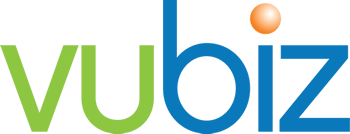 |
Written by Liz McDermott |
You've identified your organization's compliance training needs and deployed the training courses your workforce needs to address regulatory requirements. Still, your employees are not meeting your training deadlines and often complain about having to take the training. Even with managers communicating the need to complete the training, your compliance program is not being taken seriously, making the employee training experience suboptimal.
Getting employees to "happily" complete compliance training is difficult, so what do you do?
The internal marketing of training programs is crucial for the success of your compliance program. Yet, many businesses overlook this critical step for learner engagement with mandatory training. Don't expect your staff to come running when the latest regulatory course is released. They are too busy with work to think about sexual harassment prevention, business ethics, and bloodborne pathogens. Compliance training topics seem irrelevant to their day-to-day tasks. Therefore, HR teams must prioritize the internal marketing of their compliance training programs to ensure employees positively engage with the training.
This article covers the value of promoting training programs internally, followed by actionable steps your team can take to master this task to improve employee completion rates and training satisfaction. By following these steps, you will successfully market your compliance program.

The Value of Promoting Compliance Training to Employees
To ensure the success of your compliance training program, you must adopt a strategic approach tailored to the needs of your employees. Providing your employees with the training at the right time can improve learning engagement and knowledge of compliance topics. As a result, promoting compliance training courses is critical to the success of your program. To provide further explanation, let's consider the following reasons:
- Creates awareness among employees about training courses and deadlines through effective communication.
- Drives training utilization by ensuring that your staff knows how to access your learning platform to take the training, where they can find ways to integrate their calendar to schedule time to complete mandatory training and get access to additional training for their growth and development.
- Encourages a growth mindset by exposing employees to available learning and development resources. Compliance training courses bring awareness and utilization of the training resources hosted in your LMS, thus encouraging employees to search for topics that interest them, resulting in nurturing a learning culture within the business.
- Increase training ROI by getting employees to engage with more of your training programs, helping your team meet organizational goals and reach their full potential.
Step 1: Understand Your Audience
Understanding your audience is paramount to effectively promoting your compliance training program. By analyzing the different groups that make up your workforce, you can personalize training communications and map supplemental training that further engages employees with a more holistic training experience. Here's how you can approach this:
Audience Identification
- Primary: Based on the employee lifecycle stage
- Secondary: Based on compliance requirements
- Tertiary: Based on job role
Audience Characteristics
Consider factors such as geographical location, language, employment type, remote working conditions, seniority, demographics, and access to technology.
Audience Training Needs
Consider the findings from your training need analysis, skills gap analysis, performance reviews, and staff surveys to find other ways to make your communications more meaningful.
Analyzing your workforce into groups allows you to customize training program communications and experiences rather than treating all employees as one. By taking this approach, organizations can significantly enhance employee engagement by making compliance training more effective and appealing.
Step 2: Define Your Communication Strategy
Consider how you can distribute your message to your workforce and the frequency of communication. You can leverage internal communication channels and your company's social media channels to promote your compliance training program. Marketing training involves bringing awareness and celebrating successes. When developing your communication strategy, consider the following strategies:
Centralize Information
Maintain a single access point to simplify finding training, policy, and regulatory information. This could be a training portal powered by your learning management system (LMS) or a Microsoft Sharepoint page.
Communications Calendar
Establish a cadence for promptly communicating regulator training requirements to your audiences. Suppose you don't have an LMS with built-in email notifications and Slack or Microsoft Teams integrations to help you automate messaging. In that case, you can create distribution lists on Outlook or Gmail and utilize LinkedIn, Facebook, or WhatsApp Chat groups for quick dissemination.
Engagement Strategies
- Continuous Communication: Avoid limiting compliance communication to times of policy changes. Implement systematic and continuous awareness measures to keep employees engaged.
- Microlearning: Utilize microlearning techniques to provide short, accessible messages about regulatory information, allowing employees to engage at their convenience.
- Inclusion in Meetings: Incorporate compliance topics into the agenda for regular team meetings to ensure continuous engagement and awareness.
Tailor your compliance communication strategy to the different audiences that make up your staff, considering their responsibilities and the most effective communication channels for them. Organizations can create dynamic outreach that encourages employee participation in compliance training by implementing these strategies.
Step 3: Incentivize Participation and Recognition
To effectively increase employee engagement with compliance training, consider implementing a variety of incentives and recognition strategies. These can be tailored to your workforce's preferences and organizational goals:
Types of Incentives
- Cash Rewards & Gift Cards: Offer immediate gratification and flexibility, allowing employees to choose rewards.
- Merchandise & Company Merchandise: Tangible rewards can be lasting reminders of achievements.
- Digital Incentives: E-gift cards and online rewards cater to a global workforce and provide instant access.
- Paid Time Off (PTO) is highly valued by employees, offering a break from work as a reward for compliance engagement.
Recognition Programs
- Integrity Points System: Employees earn points for completing training and participating in compliance activities, redeemable for various rewards.
- Annual Compliance and Ethics Awards: These awards celebrate outstanding contributions to compliance and ethics, enhancing visibility and prestige within the organization.
- Recognition: Certificates and commendations for immediately recognizing compliance-promoting behaviors and fostering a culture of appreciation.
Performance and Promotion Ties
- Compliance Comprehension Tests: Integrate into annual performance evaluations to underscore the importance of compliance knowledge.
- Compliance Certification for Promotion: Make ethics and compliance understanding a prerequisite for advancement to senior roles, reinforcing its value across the organization.
By offering a mix of incentives and embedding recognition into the fabric of your organization, you can motivate employees to prioritize and engage with compliance training, aligning to increase training engagement.
Step 4: Measure and Adapt
To ensure the marketing of your compliance training program is compelling and engaging, consider these strategies for measurement and adaptation:
Evaluate Training Effectiveness
- Completion Rates: Monitor the number of employees who complete the training and the average day of completion. Are they completing the training well in advance or waiting until the last minute? These two metrics are good indicators of your marketing effectiveness.
- Training Assessments: Utilize quizzes or practical demonstrations to measure comprehension and application of the training material directly.
- Employee Feedback: Gather insights through surveys to understand the training's usability, relevance, and areas for improvement. Document the effectiveness of training programs through detailed surveys, helping secure future training budgets and improve overall workforce performance.
Adapt Based on Findings
- Behavioral Shifts: Monitor changes in employee behaviors and attitudes towards compliance training to gauge the impact of your marketing efforts.
- Training Stickiness: Track employee engagement with other training courses to identify improvement in utilization.
Leverage Data for Continuous Improvement
KPIs and HR Data: Review organizational KPIs, exit interviews, and incidents of misconduct to identify areas of strength and weakness.
By systematically measuring and adapting the promotion of your compliance training program, you can ensure your workforce is engaging with your efforts and that such efforts are creating a positive experience around compliance.
Conclusion
Throughout the article, we've underscored the unparalleled value of marketing compliance training, offering a strategic blueprint to help HR professionals get started. Key strategies included understanding your audience, defining a communication strategy, incentivizing participation, and measuring effectiveness. These practical steps will help organizations elevate employee engagement with compliance training, solidifying the organizational culture around accountability and legal adherence.
Adapting these steps to your organizational context can significantly influence the success of your compliance training initiative by ensuring that employees are not only aware of compliance training but also motivated to align with additional training resources, fostering a learning culture. Regular assessment and iteration of your compliance training promotion efforts are necessary to meet an evolving workforce and organizational goals. Encouraging a culture of recognition transforms compliance from a mandate to a shared value among employees.
To reinforce your strategic approach to compliance training, explore Vubiz LMS training solutions. These solutions help you easily promote training courses to your workforce. The Vubiz platform supports notifications and social media integrations, making it simpler than ever to engage your team effectively.
